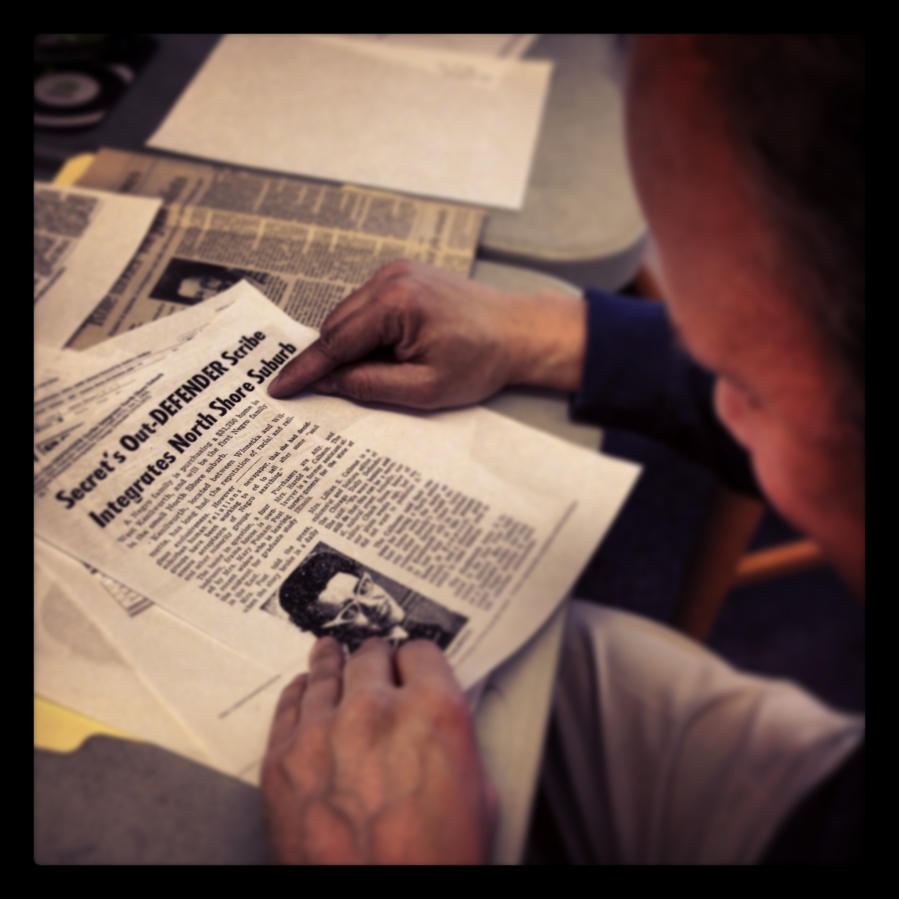— Short Series —

On November 1, 1889, a wealthy businessman, Joseph Sears purchased 208.6 acres of land for $135,000 and became known as Kenilworth, Illinois. As founder, Sears had set several ordinances “Large lots, high standards of construction, no alleys, and sales to Caucasians only”. Soon after, it was amended to allow for Black’s as live-in domestics.
As such, there was never a residential property owned by a Black family . . . or were there? Census data throughout Kenilworth’s history tallied live-in domestics: In 1900, 9 were recorded; in 1930, 107; 1960, 39; 1990, 15; 2000, 4. A total of 7 Blacks were recorded in the 2010 census out of a total population of 2,513.
We did kind of upset the apple cart by moving there.
Harold and Lillian Calhoun are known to be the first Black family to purchase a home in Kenilworth. The Calhoun’s had four children and the family lived at 601 Melrose Avenue. from 1964 until 1976. In 1966, The Calhoun’s were alerted to a fire on the front lawn:
“Kenilworth officials this week expressed shock over Friday night’s cross-burning on the lawn of the village’s only Negro family and promised to use every source available to find the offenders. A neighbor discovered the eight-foot tall cross blazing in front of the home of Harold W. Calhoun, 601 Melrose Ave., at about 10:30 p.m . . . The only member of the Calhoun family to see the cross was the Calhouns’ eldest daughter, Laura, 14. The youngest Calhoun child, Karen, 5, was asleep and Walter, 8, and Harold, 12, were preparing for bed.”
Harold Calhoun was assistant attorney general for the State of Illinois. Lillian Calhoun was a Journalist for Ebony and Jet Magazines and later, feature editor of the Chicago Defender. In 1965, she joined the Chicago Sun-Times, becoming the first Black woman to work in the publications newsroom. She later formed a public relations firm, Calmar Communications.
Their son, Walter Calhoun reflects back on life in Kenilworth. “Being 5, I had a different, more positive experience living there.” Calhoun said. “My brother and sister, being older, had a different one.” Mr. Calhoun later reflected that he believed that his mother may have, in the end, thought it was a mistake to move there. “She did not want to be the first and only Black family. She hoped that other families would follow.” Calhoun said.
The Calhoun’s eventually moved away as the children graduated and moved on and due to career changes. Walter Calhoun later moved back to the North Shore, though, not Kenlilworth. “I moved to an area that was, well, more diverse.”
Robert Hadley began as a coachman for Butler Livery in Evanston
Early history in Kenilworth may have recorded an earlier family before the Calhoun’s who owned property in Kenilworth, or at least connected to a larger part of “property” owned by Kenilworth founder, Joseph Sears.
“From the recollection of early residents of Kenilworth, the location of the Indian cabin was in Winnetka, a few hundred feet north of the Kenilworth boundary line, on pasture land adjoining his home and rented by Joseph Sears. It was occupied by Robert Hadley, colored coachman of the Sears, and then torn down in 1903.”
Robert Hadley, from Tennessee and his wife Julia, from Canada, had two children, Ethel and Hazel. Robert Hadley began as a coachman for Butler Livery in Evanston (1890), Later as chauffeur at the 339 Sheridan Road address (for Joseph Sears). Robert was later listed as a gardener c1925.
The Hadley’s housing patterns varied from 1890 through 1931 between Evanston, Winnetka and Kenilworth. The addresses in Kenilworth were 339 Sheridan Road, and 542 Wayland Avenue. An additional address, 542 Pleasant Avenue was listed in the Kenilworth directory. However, reviewing today’s maps, the address seems to be in Winnetka. This is the address that the Hadley family was listed as “Owner” in 1929.
After 120 years, Kenilworth may have come full circle again. The latest census had enumerated zero African American’s as residents.
Sources: United States census 1900- 2010; Current demographic profile – http://www.areavibes.com/kenilworth-il/demographics/; 1890-93 Evanston Directories; Does My Town Have a Racist Past? http://www.tolerance.org/magazine/number-33-spring-2008/feature/does-my-town-have-racist-past. Blogs and Articles: Race and Ethnicity. Number 33: Spring 2008; Avoiding History at the National Trust, James W. Loewen, Sunday, May 28, 2006 – 21:36; Chicago Defender, August 26, 1963 p.2; Chicago Defender, June 3, 1964, p. 3; Chicago Tribune, January 31, 2006, sect. 2 p.5.; Kenilworth, First Fifty Years, Village of Kenilworth, F. R. Kilner, chairman, 1947; Wilmette Life Wilmette, Illinois, 26 May 1966, p. 3, 5. Recorded interview of Walter Calhoun, April 19, 2013.
Wow,
Was this a real commercial…Of course it was…Thank you very much for sharing this information. I always like to Shorefront and the honest to goodness historical facts you provide for the city of Evanston and Skokie and beyond residents. I had no idea that the calhouns were the first to own property in Kenilworth and today there is a 0% African American population in Kenilworth…Not hard to believe, I wounder what the population of blacks are in the neigboring suburb of Winnetka and Wilmette? thank you very much! This is great research and I will definitley pass this on to ETHS’s humanity teachers, Ms. McAlpin-Toney and Ms. Ruocco who teach lessons to their students and their students have to do their own research on the history of Evanston’s diversity in the community and our schools.